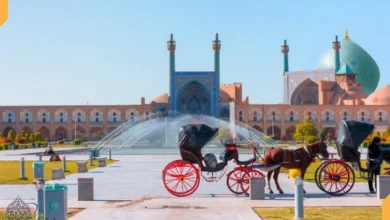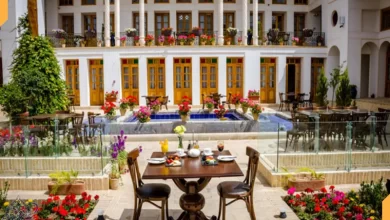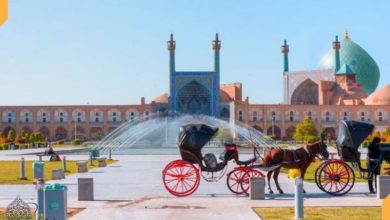Kavir Desert or Salt Desert

Kavir Desert (Dasht-e Kavir) or Salt desert is the widest desert of Iran. This desert is located in 300 km of the east and south- east of Tehran province. For more information about this unique attraction of nature, tune on.
More about Kavir Desert or Salt Desert
Near a quarter of the wide country of Iran is consisted of desert regions.
Kavir and Lut Deserts are more known among people and totally, include areas equal to 360 thousand km.
Salt desert, central Kavir or Kavir desert with 800 km length and 6000 km width is considered as one of the widest salt marshes in the world.
Of course, the Kavir Desert is not totally desert and it consisted of different climates.
Why visiting the Kavir Desert is suggested?
- observing one of the strangest nature effects
- being familiar with the unique and diverse climatic conditions of the region
- Unforgettable experience of observing different landscapes
- becoming familiar with phenomena like salt domes, Salt River, and sandy hills and their special characteristics
- travel in on the most beautiful parts of the Kavir desert named “Caracal”
- Doing entertainments like camel riding, safari, walking in Kavir, and observing the sky
- Spending happy moments under the stellar and wonderful sky of Kavir
- observing the phenomenon of the meteor showers in the heart of Kavir
- residing in desert camps and having unforgettable memories.
- Prominent Tourist and Natural characteristics of the Dasht-e Kavir
There is one of the oldest regions of central desert in the southern part of the Kavir Desert, named “Biabanak”.
“Jandagh city” that was known as “Exile” in the time of Anushirvan governance.
You can see an ancient and glorious dome that is a relic of the Sassanid period.
Unique remnants of brick pillars from King Abbas Safavid.
Geographical Position of Kavir Desert
- Dasht-e Kavir is placed in the center of Iran’s plateau.
- It leads from north to central and southern Alborz hillsides and
- from west to the link road of Damghan to Jandagh and Rig Jen Desert,
- from east to the mountains of Pir Hajat and Ozbek mount
- and from south to signal axis of Khour- Tabas.
As mentioned, it has more than 800 km in length and a width near 600 km.
Salt desert can be considered as the widest desert of Iran that is being started from the southern hillside of Alborz mount and being extended till ran’s capital.
In the heart of Kavir, there are deserts and protected regions including Marvest, Damghan, and Khartouran.
In the west of Kavir, there is a desert of salt that is considered one of the thermal poles of planet earth.
The temperature of the region reaches more than 50 degrees Celsius in summer and it has been observed that the temperature difference between day and night is 70 degrees Celsius.
The main part of it consisted of vast swamps and it is covered with sandy hills and scattered heights on the sidelines its vegetation is mainly halophyte plants.
The average Kavir Desert’s height from the free-water surface is near 700 m.
The lowest region that is located in the central regions is 650 m and the highest point of it has about 838 m in height in the north of Khour salt desert and Biabanak.
Formation procedure of the Dasht-e Kavir or Salt Desert
Geologists say that millions of years ago, a salty lake encompassed this desert named “Tiss” and it surrounded a small scope that now, it is located in the center of Iran.
By passing time and due to the warmth of the weather, it is being dried.
The existence of layered sediments in this desert proves the previous hypothesis.
Today, most part of the Kavir Desert is covered with swamp, and in the eastern regions, it is covered with sandy hills and southern parts also have clay soils and there isn’t any vegetation in it.
The soil of the Dasht-e Kavir is fully sterile and it is not sufficient for agriculture. There isn’t any drinking water in the region and causing this place to be total without habitats.
The dangers of deserts prevent researchers to search in all parts of the region.
In terms of vegetation, it is divided into three groups. Its central core which is completely hot and dry lacks life and it remained unknown. Surrounding this core that has plants compatible with salty soil and desert lands.
Kavir Desert roads
Lack of vegetation in most of the parts of the Kavir Desert and the existence of low-height lands caused the smallest rainfall causes forming frightening swamps in this desert.
Hence, passing from this desert is so dangerous without necessary research.
Halwan to Arousan was a communication axis that was used by caravans in the past; of course, this was used seldom and in case of need.
Today, having a trip to the desert is so dangerous;
the regions that are covered with salt have a rough surface, but it’s necessary to know that the thickness of this layer is only a few centimeters and there is sleazy mud under it that is called “Charbeh”.
This mud is so dangerous and if someone is caught in it, he has lots of difficulties coming out.
Which spectacular places are located near the Kavir Desert?
the Mesr village and desert
- Hotels that are located near Kavir Desert:
- Maziyar residence: 85 km
- Safa residence: 64 km
FAQ
Why visiting the Kavir Desert is suggested?
Camel riding, safari, etc.
What is the name of the oldest regions in the southern part of the Dasht-e Kavir?
Biabanak.
Which city was known as “Exile” in the time of Anushirvan governance?
Jandagh.
What is the name of a sleazy mud under a salt layer of the desert?
Charbeh.
Conclusion
Although Kavir Desert or Salt Desert is so mysterious and attractive, to observe natural attractions, you should accompany experienced people.
Have you ever traveled to the Kavir Desert?
Did you go alone or with someone else? What did you do there? Share your experiences with us…





